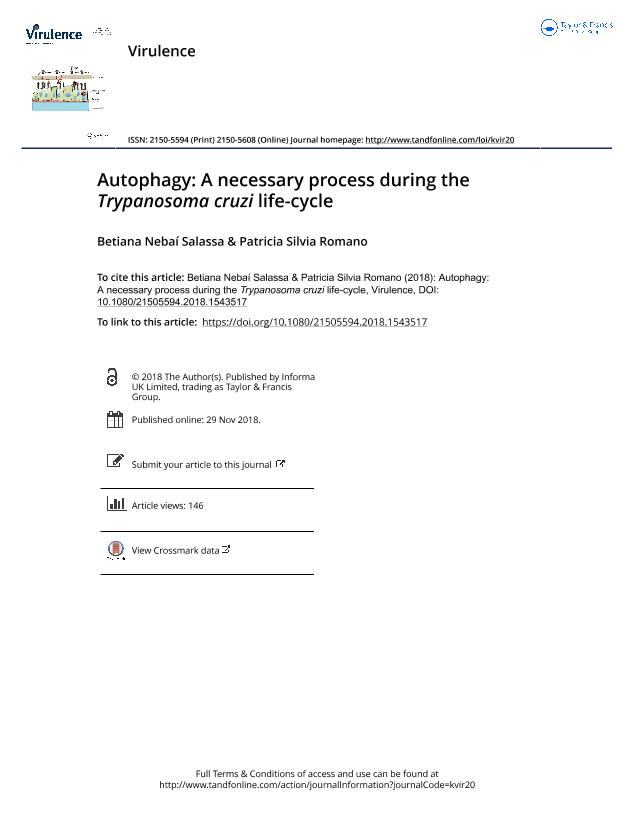Artículo
Autophagy: A necessary process during the Trypanosoma cruzi life-cycle
Fecha de publicación:
01/2019
Editorial:
Taylor & Francis
Revista:
Virulence
ISSN:
2150-5594
e-ISSN:
2150-5608
Idioma:
Inglés
Tipo de recurso:
Artículo publicado
Clasificación temática:
Resumen
Autophagy is a well-conserved process of self-digestion of intracellular components. T. cruzi is a protozoan parasite with a complex life-cycle that involves insect vectors and mammalian hosts. Like other eukaryotic organisms, T. cruzi possesses an autophagic pathway that is activated during metacyclogenesis, the process that generates the infective forms of parasites. In addition, it has been demonstrated that mammalian autophagy has a role during host cell invasion by T. cruzi, and that T. cruzi can modulate this process to its own benefit. This review describes the latest findings concerning the participation of autophagy in both the T. cruzi differentiation processes and during the interaction of parasites within the host cells. Data to date suggest parasite autophagy is important for parasite survival and differentiation, which offers interesting prospects for therapeutic strategies. Additionally, the interruption of mammalian autophagy reduces the parasite infectivity, interfering with the intracellular cycle of T. cruzi inside the host. However, the impact on other stages of development, such as the intracellular replication of parasites is still not clearly understood. Further studies in this matter are necessaries to define the integral effect of autophagy on T. cruzi infection with both in vitro and in vivo approaches.
Palabras clave:
ATG8.1
,
HOST CELL
,
LC3
,
METACYCLOGENESIS
,
T. CRUZI
,
T. CRUZI INFECTION
Archivos asociados
Licencia
Identificadores
Colecciones
Articulos(IHEM)
Articulos de INST. HISTOLOGIA Y EMBRIOLOGIA DE MEND DR.M.BURGOS
Articulos de INST. HISTOLOGIA Y EMBRIOLOGIA DE MEND DR.M.BURGOS
Citación
Salassa, Betiana Nebaí; Romano, Patricia Silvia; Autophagy: A necessary process during the Trypanosoma cruzi life-cycle; Taylor & Francis; Virulence; 10; 1; 1-2019; 460-469
Compartir
Altmétricas




